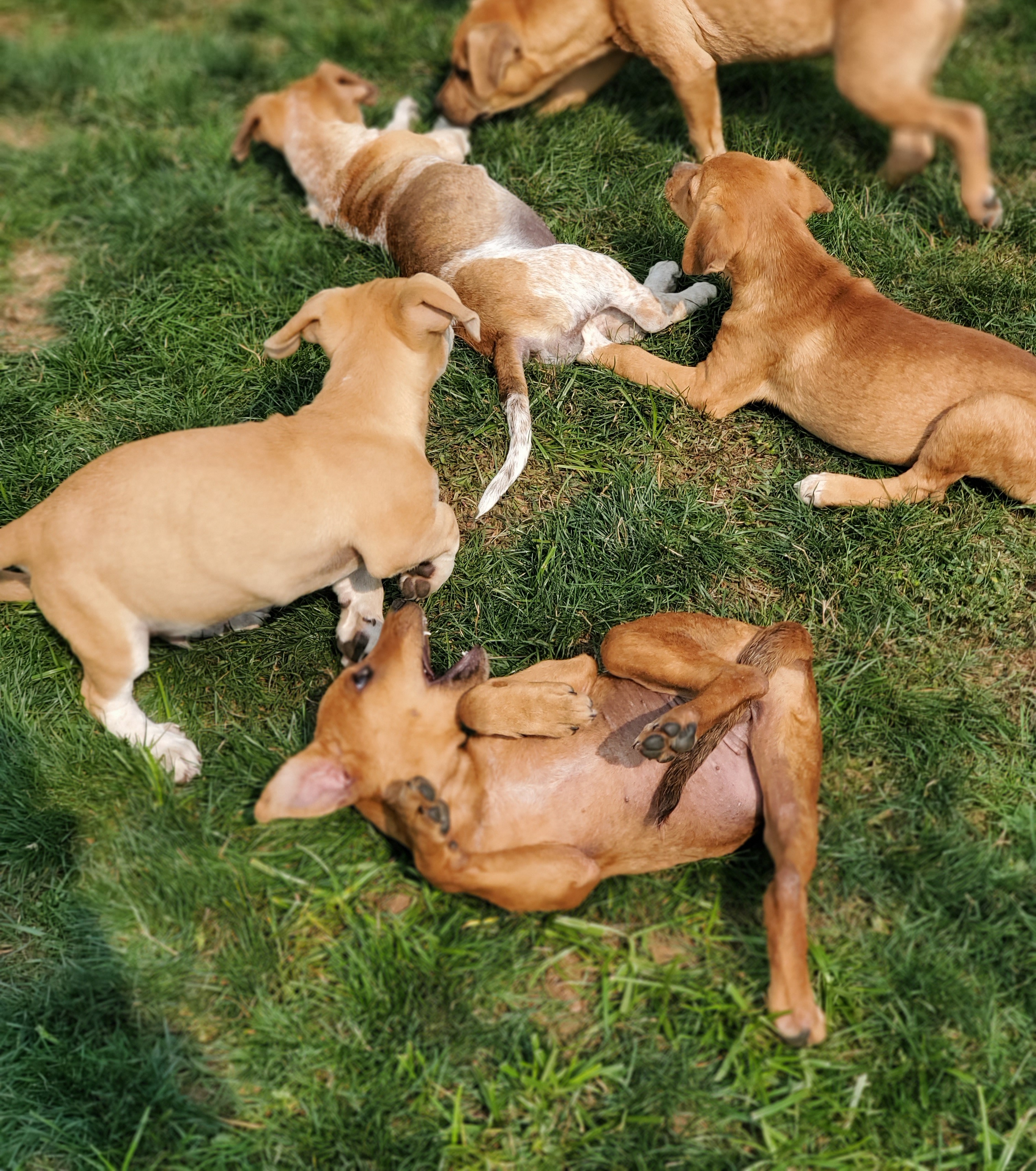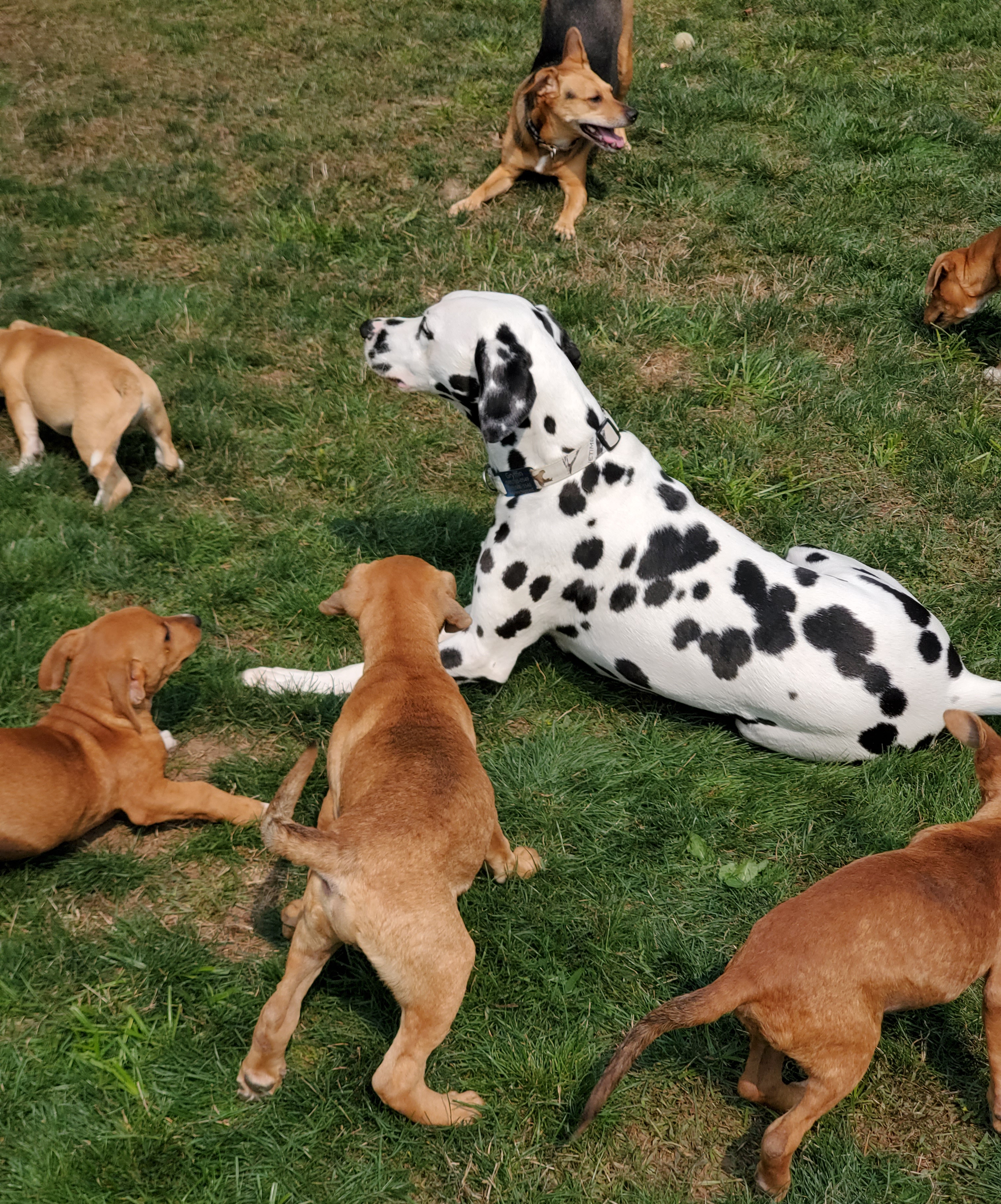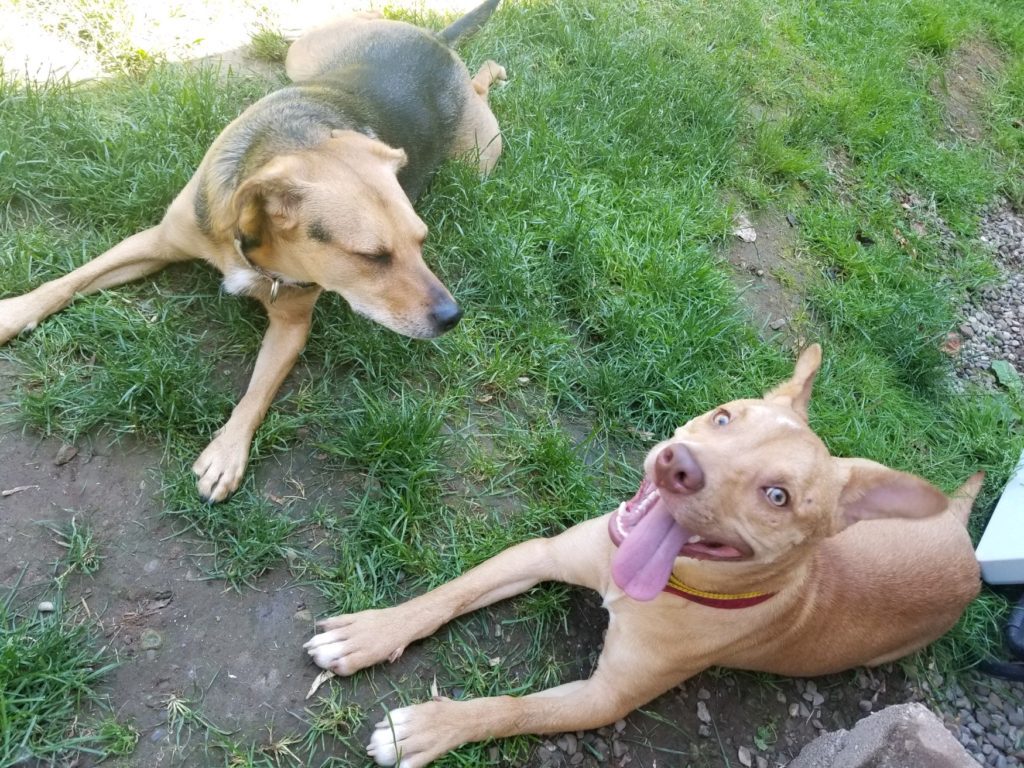
Socialization
When it comes to owning a new puppy, there is a lot more than making sure that your puppy is potty trained, crate trained, or knows “sit”. Don’t get me wrong, these are great essentials but there are far more important training that needs to be a part of a puppy’s upbringing. Socialization, desensitizing, and play. A poor foundation is any three of these categories can cause behavior problems later in life for your puppy. From fearful behavior to certain types of aggression. Now, there is no need to be worried. I will give you the best strategies to help make your puppy as well-rounded and prepared for the world as possible!

This is probably the most misunderstood term when it comes to puppies. “Socialization” does not mean that your puppy needs to meet all the dogs possible before one year of age. If you do this, you will set your puppy up for failure.
Dog to Dog Socialization
As a new dog parent, I want you to be picky on who your dog socializes with. You should be scheduling small play groups with dogs you know. Make sure they are dogs that are well versed in doggie language and well socialized themselves. Make sure it is with all different types of dogs as well; large, small, fluffy, scruffy, male, female.
I know that may seem stressful and near impossible but there are ways! The easiest is get your puppy signed up for a puppy kindergarten class and make friends there. Exchange numbers with the owners and set up playdates with them. Best part, you already know the dogs and trust that everyone is using the same socializing methods.
If you rescued your puppy, another great way to get a group together would be to see if anyone else from the rescue, who adopted a puppy, is interested in a playdate. A lot of rescues have an alumni page on Facebook that you could make a post in asking for a small group of puppies to get together for some socializing.
The one thing you should never ever ever do is use a dog park to socialize. NEVER! Dog parks create poor socialization skills and dog fights. If you subject your dog to a dog park where they are learning from other dogs that are not good communicators, you are causing behavior problems and future expensive training for your puppy. Later in life, when your dog is confident and a good communicator then you can utilize dog parks. Just with caution!
Take a look at the Play section below so you know what is good and bad play behavior!
Dog to Human Socialization
Puppies need socializing outside of other dogs though. Just because they are man’s best friend doesn’t mean they come preprogrammed to trust humans. You have to expose your puppy to all types of people. Have your puppy meet all kinds of women, men, and children. It is also super important to show the puppy there are many types of people as well. Have them interact with people with baggy clothes on, hats on, beards, no hair, glasses, deep voices, high pitched voices, fat, skinny. You name it, socialize with it!
My favorite place to socialize with people is Lowe’s or Home Depot. Those stores attract all kinds of kinds and everyone is always so excited to see a dog. When you go into a hardware store you’re not prepared to see a dog there because it isn’t well known that dogs are allowed. Because of that, everyone is willing to stop and say hi to your dog! Bring lots of small training treats and pass off a little bit to someone willing to say hi. Have them give the treats to your puppy and work up to petting the pup. Positive situations make a well socialized puppy!
Desensitizing
Just like socializing, puppies need to be well rounded with different life experiences so they don’t become fearful. You are probably confused why I’m trying to jam a whole lifetime worth of experiences in the first year of life. All your puppy needs is enough exposure to different stimuli to be familiar and confident.
So what do you desensitize to? Everything. Think of desensitizing as working through your dog’s senses. You want the dog to be exposed to all sorts of sights, sounds, feelings. The more exposure they have, the more confident they will be with change.
Sights
Sights are extremely important when it comes to desensitizing because this is where the leash triggers start. A puppy becomes visually interested in something and starts pulling or barking until it can get to what it sees. If you work on your puppy being exposed to different sights without letting them over react, then you will have a calm respectful puppy.
Start with some distance between you and the puppy and the visual item. If the puppy shows no signs of fear or stress, say “yes” and love them up. This shows the puppy they don’t need to be scared or reactive to what they see. Your goal is to move closer and closer to the item without fear, stress, or reactivity. Do not force the puppy to move closer if they do not want to, this will create fear issues. If the puppy becomes reactive or fearful, get their attention and remove them from the situation. Reattempt but from farther away.
Here is a list of sights you should be training with!
- Balls (Bouncing)
- Balls (Rolling)
- Balloon
- Bicycles
- Birds
- Boxes
- Canes
- Cats
- Dogs
- Flags
- Mirrors
- Scooters
- Shopping Cart
- Skateboard
- Stroller
- Umbrella (Closing)
- Umbrella (Opening)
- Wheelchairs
Sounds
When it comes to noise, this can be the most stressful for a puppy. As their ears develop more and more noises can be detected and if a puppy is unsure then the noise can be a lot worse than just a sound.
The best way to desensitize against noises is to play with your puppy. Yes, play! I want you to get a special toy that you will only utilize for desensitizing sessions. This will make the training more interesting for your puppy because there is a new toy for them to play with.
While playing with your puppy, I want you to play clips of different every day noises. Start at a low volume and slowly increase the volume until it is a normal volume. There is no need to blast anything, the puppies ears already work stronger than humans so we don’t want to bust an ear drum. If your puppy becomes fearful or reactive to the noise, lower the volume and continue to engage them in play. Keep track of what volume you were at and try that noise the following day, only going past that volume level if the puppy is calm and non-reactive.
Here is a list of noises you should be playing for your puppy!
- Airplane
- Alarm Clock
- Bags Ruffling
- Babies
- Car Horn
- Cats Meowing
- Clothing Sounds
- Crowd of People
- Dogs Barking
- Doorbell
- Fireworks
- Gunshots
- Hair Dryer
- Hammers
- Kids Playing
- Kitchen Noises
- Knock on Door
- Lawn Mower
- Leaf Blower
- Nail Clippers
- Nail Grinder
- Phone Ring
- Radio
- Saws
- Scissors
- Sirens
- Smoke Alarm
- Television
- Thunder
- Vacuum
- Wind
- Whistles
Feelings
When it comes to touch, we want the puppy to focus on walking across different types of surfaces. It is all about their paws and the feelings underneath them! We are creating a puppy confident on their feet.
The best way to do this is with your training treats. Place a handful of training treats on the area you want the puppy to walk on. Encourage the puppy to go get all the treats from the new surface area. After they have retrieved all the treats, love them up!
Here is a list of feelings you should use as a surface for your puppy!
- Bathtub
- Blanket
- Carpet
- Concrete
- Dirt
- Grass
- Gravel
- Metal
- Plastic
- Rubber
- Sand
- Stairs
- Tile
- Turf
- Unstable Surface
- Water
- Wood
When doing these exercises you are looking for relaxed ears, relaxed mouth, fluid wagging tail, and soft eyes in your puppy. If your puppy is becoming fearful or stressed you will see their ears pin back, they may start panting, the tail will be stiff or jagged wagging. Always end your sessions on a positive note. If you notice your puppy starts to become stressed, remove all stimuli and do a few good “sits” or “downs” then end the session. It does no harm to go back a step and try again the next day!
Each day if you work with your puppy with one sight, one sound, and one feeling you will be training the most desensitized puppy ever! As they grow you will notice you have exposed them to dozens of sights, sounds, and feelings creating the most confident puppy.
Puppy Play
As mentioned earlier, it is essential that your puppy socializes with dogs well versed in doggie language and is well socialized. This way your puppy is playing with a dog that is a good, fair player.
Good Behavior

When everyone is playing, make sure to watch for positive behavior between everyone. There should be lots of play bows, bouncing, chase, and keep-away. If everyone is enjoying themselves there will be lots of play-fighting and chase/keep-away. It is also healthy to pause the play randomly. This helps keep adrenaline levels at a good level and avoids frustration in dogs who may not be the most adventurous socially.
Behavior To Avoid
Humping
It is important to make sure everyone remains neutral and is having fun during the play sessions. Make sure no one is humping. Humping is a sign of dominance and is not acceptable at play groups. Sometimes it can even lead to a fight, if a dog is over persistent. If your dog is the humpee, remove them from the situation and give them a 5 minute time out on leash.
Rough Play
Another sign of a dog being a little too much is if they pin a dog down too long during play fighting. When dogs play-fight, they will rotate roles. Sometimes they will be the predator, sometimes the prey. During this, they should not pin their friend down for more than the count of three. If the pinning goes past that count, intervene by getting your dogs attention. Then allow them to keep playing.
Backing Into A Corner
During the play sessions be conscious of where every dog is. Never let a dog back another dog into a corner or against a wall. Make sure all play is on the most open part of the area. If a dog is backed into a corner or is pushed up against a wall, quickly call your dog and allow the other dog to get out of the situation. Having a dog with no escape can cause them to react out of fear.
Scared Puppy
Avoid a scared puppy. If your puppy has their tail tucked, ears pinned, wide eyes then they are scared. You need to remove them from the play group and try again later. Never just let them work it out. Remove them and immediately get them doing positive training work with you. It may be beneficial to try just a one on one play session to start for a more timid puppy.
Chest-To-Chest
Do not let dogs go chest to chest. Dogs who go chest-to-chest are, more times than not, challenging each other. This can quickly lead to a dog fight. If you see this quickly get your dogs attention and redirect them to a different play partner or have them do a 5 minute time out on leash.
Puppy Essentials Concluded
Socialization, desensitization, and puppy play are going to be your foundation to creating a confident adult dog. Get your puppy out there, meeting people, seeing new things, hearing different noises! The more you expose your puppy to the better off they will be! You can even ask Lily, and she is a little judgey at times.
